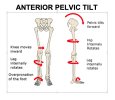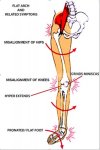AJM
Ski Diva Extraordinaire
So I have quietly gone and bought new ski boots !! I've been in the Tecnica Mach 1 LV 95's for the last few seasons (I think mine were the 2018 model ?) and over that time have had a lot of work done on them by my friendly local boot fitter incl having canting wedges put in during the middle of last season and this is where the trouble started  Dont get me wrong I looooove the way the canting plates improved my skiing and removed the majority of my A Framing however my right knee ( I had 3 degree canting in that one) did not love it as much as I did and I've been skiing in varying degrees of pain ever since. I'd finally had enough and as you cant revert the canting once its in I went back to square one and managed to get a pair of Tecnica Mach 1 LV 105's (2022) which my bootfitter managed to locate. We've been playing around with them over the last couple of days and I thought we'd got them sorted but I was getting this strange ache on the outside of my right instep and up through my lower leg (the really wonky leg) so my bootfitter took out the heel lifts I've had in my ski boots since like forever and it improved. Once I got home I tried them again and there it was again, this weird ache .... fast forward and I put my old liners in the new shells and bingo the pain had gone. I had a look at both the new liners and my old ones and the tongue in the new ones seems quite a lot narrower and I'm wondering if this has something to do with it, perhaps its putting pressure on a nerve or something? For now I'm going to ski in my old liners (which although are packing out arent too bad just yet) and get used to skiing without the canting plates again and also the higher flex (which of course I can soften if needed). Its strange as its basically the same boot just with a higher flex so all I can think is that the tongue has something to do with it, anyone have any thoughts?
Dont get me wrong I looooove the way the canting plates improved my skiing and removed the majority of my A Framing however my right knee ( I had 3 degree canting in that one) did not love it as much as I did and I've been skiing in varying degrees of pain ever since. I'd finally had enough and as you cant revert the canting once its in I went back to square one and managed to get a pair of Tecnica Mach 1 LV 105's (2022) which my bootfitter managed to locate. We've been playing around with them over the last couple of days and I thought we'd got them sorted but I was getting this strange ache on the outside of my right instep and up through my lower leg (the really wonky leg) so my bootfitter took out the heel lifts I've had in my ski boots since like forever and it improved. Once I got home I tried them again and there it was again, this weird ache .... fast forward and I put my old liners in the new shells and bingo the pain had gone. I had a look at both the new liners and my old ones and the tongue in the new ones seems quite a lot narrower and I'm wondering if this has something to do with it, perhaps its putting pressure on a nerve or something? For now I'm going to ski in my old liners (which although are packing out arent too bad just yet) and get used to skiing without the canting plates again and also the higher flex (which of course I can soften if needed). Its strange as its basically the same boot just with a higher flex so all I can think is that the tongue has something to do with it, anyone have any thoughts?
 Dont get me wrong I looooove the way the canting plates improved my skiing and removed the majority of my A Framing however my right knee ( I had 3 degree canting in that one) did not love it as much as I did and I've been skiing in varying degrees of pain ever since. I'd finally had enough and as you cant revert the canting once its in I went back to square one and managed to get a pair of Tecnica Mach 1 LV 105's (2022) which my bootfitter managed to locate. We've been playing around with them over the last couple of days and I thought we'd got them sorted but I was getting this strange ache on the outside of my right instep and up through my lower leg (the really wonky leg) so my bootfitter took out the heel lifts I've had in my ski boots since like forever and it improved. Once I got home I tried them again and there it was again, this weird ache .... fast forward and I put my old liners in the new shells and bingo the pain had gone. I had a look at both the new liners and my old ones and the tongue in the new ones seems quite a lot narrower and I'm wondering if this has something to do with it, perhaps its putting pressure on a nerve or something? For now I'm going to ski in my old liners (which although are packing out arent too bad just yet) and get used to skiing without the canting plates again and also the higher flex (which of course I can soften if needed). Its strange as its basically the same boot just with a higher flex so all I can think is that the tongue has something to do with it, anyone have any thoughts?
Dont get me wrong I looooove the way the canting plates improved my skiing and removed the majority of my A Framing however my right knee ( I had 3 degree canting in that one) did not love it as much as I did and I've been skiing in varying degrees of pain ever since. I'd finally had enough and as you cant revert the canting once its in I went back to square one and managed to get a pair of Tecnica Mach 1 LV 105's (2022) which my bootfitter managed to locate. We've been playing around with them over the last couple of days and I thought we'd got them sorted but I was getting this strange ache on the outside of my right instep and up through my lower leg (the really wonky leg) so my bootfitter took out the heel lifts I've had in my ski boots since like forever and it improved. Once I got home I tried them again and there it was again, this weird ache .... fast forward and I put my old liners in the new shells and bingo the pain had gone. I had a look at both the new liners and my old ones and the tongue in the new ones seems quite a lot narrower and I'm wondering if this has something to do with it, perhaps its putting pressure on a nerve or something? For now I'm going to ski in my old liners (which although are packing out arent too bad just yet) and get used to skiing without the canting plates again and also the higher flex (which of course I can soften if needed). Its strange as its basically the same boot just with a higher flex so all I can think is that the tongue has something to do with it, anyone have any thoughts?
 ) so I'll see how that goes. I'm way too scared to tell my bootfitter but she'll probably find out tomorrow
) so I'll see how that goes. I'm way too scared to tell my bootfitter but she'll probably find out tomorrow 





